British Tank Crew Survived Being Stuck in No Man’s Land for Three Days
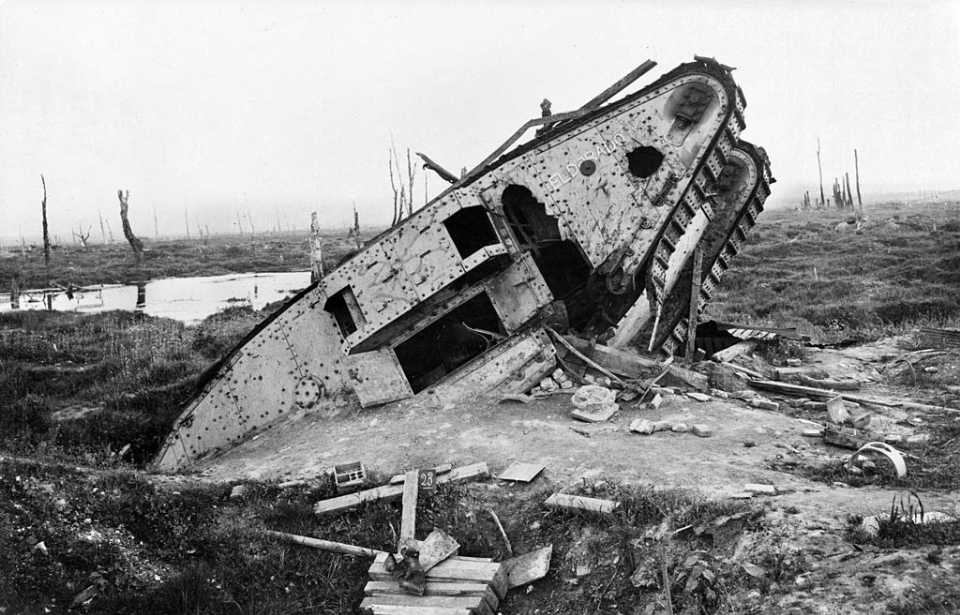
The Third Battle of Ypres – better known as the Battle of Passchendaele – is famous for the difficult conditions the British had to contend with when fighting against the German forces in Belgium. Weeks of unrelenting rain turned the battlefield into a muddy swamp, meaning both tanks and servicemen alike had difficulty making advances.
The poor terrain greatly impacted the effectiveness of one tank crew, who found themselves stuck in the middle of No Man’s Land for three days during the fighting.
The Fray Bentos tank crew
The Fray Bentos was a British Mark IV tank, captained by Donald Richardson of Nottingham. Richardson was working at his family’s grocery store when the war broke out in 1914 and immediately enlisted with his local regiment, the Nottinghamshire and Derbyshire Regiment – AKA the Sherwood Foresters. He was shipped to the Western Front the following year.
When the British began incorporating tanks into their war arsenal, Richardson was promoted to captain and given command of his own tank crew. He named the Mark IV “Fray Bentos,” after the canned meat his family sold at their store.
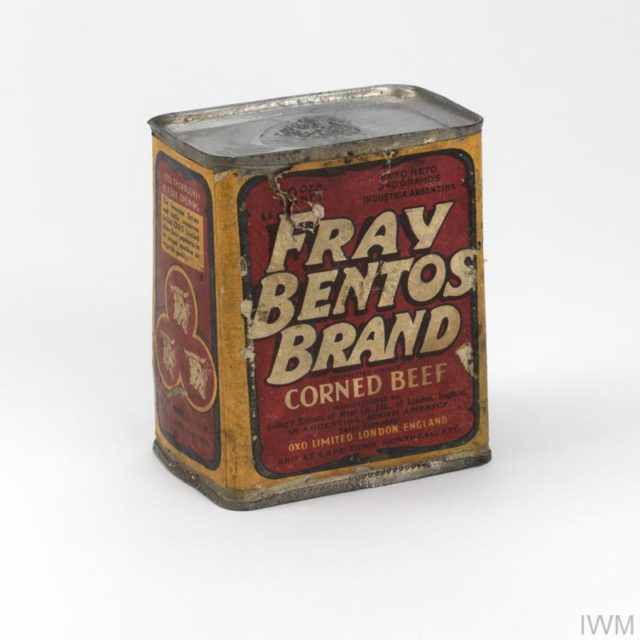
The Mark IV tank first entered service in May 1917 and quickly became the most prolific tank of the First World War. It was the first to be produced and used en masse, and allowed the British forces to make great headway against the Germans in a number of battles. This was thanks to its armaments, which included two Ordnance QF 6-pounder guns and four Lewis .303-inch machine guns, on top of the personal weapons of its crew.
The other men to make up the Fray Bentos tank crew were Lt. George Hill, Sgt. Robert Missen, Lance Cpl. Hans Braedy and gunners William Morrey, Frederick Arthurs, Ernest Hayton, James Binley and Percy Budd.
Trapped in No Man’s Land at Passchendaele
The Battle of Passchendaele broke out on July 31, 1917, when the British and French launched an offensive against the Germans in the area around Ypres, in Belgium. The fighting continued until November 10 of that year, and while it eventually ended in a British victory, the battle was an incredibly arduous one.
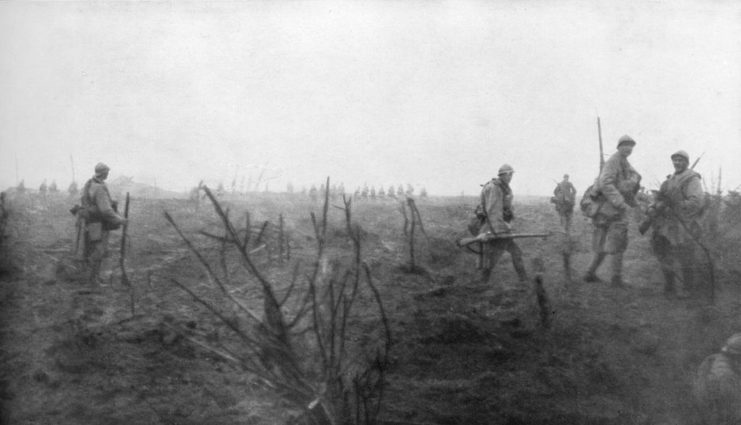
At 4:00 AM on August 22, 1917, the Fray Bentos crew set off across No Man’s Land in support of an attack by the British 61st Division, near St. Julien. Capt. Richardson opted to walk beside the Mark IV during the advance, during which the tank came under German machine gun fire from Somme Farm. The crew took out the position with their own guns.
As they continued their advance toward the objective, Gallipoli, the Fray Bentos once again came under German machine gun fire. Richardson was injured during the attack, suffering bullet wounds to his leg, and quickly made his way inside the tank. Hill suffered a wound to his neck and was blown off his seat, at which time the tank hit a soft spot of mud and fell sideways into the ditch. In the three weeks leading up to the advance, the area had suffered relentless rain storms.
Missen and Braedy exited the Fray Bentos to retrieve its unditching equipment, but came under fire from the Germans. The men in the tank returned fire. Braedy was killed during the skirmish and his body sank into the mud. It was never found.
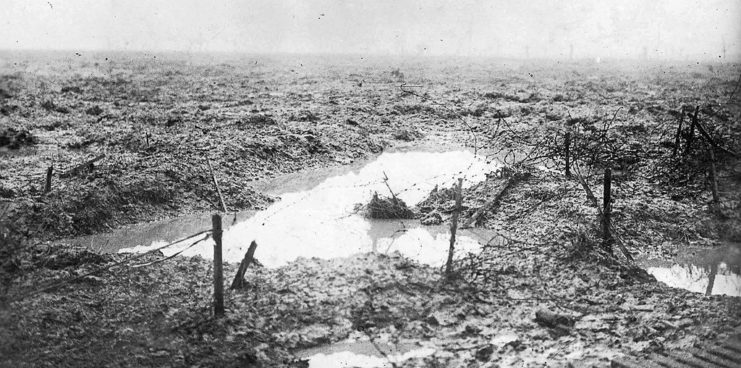
By 7:00 AM, the attack had stalled ahead of the tank and the British infantry began falling back to their trenches. This left the Fray Bentos crew alone in No Man’s Land. The Germans approached the tank, and while largely held off by its Lewis guns managed to engage its crew in close combat. Before long, most of the men had been wounded.
Orchestrating an escape
Over the next three days and two nights, the crew of the Fray Bentos fought off the Germans from their position in No Man’s Land. They also had to contend with fire from British snipers, who believed the men to be German soldiers attempting to steal the stuck Mark IV. Missen volunteered to crawl back to the trenches, and the snipers soon stopped firing at the tank and its crew.
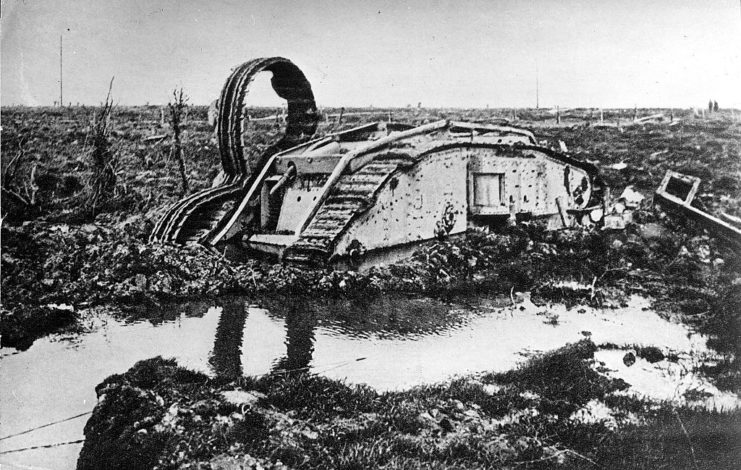
To survive, Richardson and his men drained the tank’s radiator and drank filthy ground water. After the third day, he decided it was time they made an attempt back to the British lines and instructed his crew to dismantle the tank’s cannons and gather their weapons and maps. At 9:00 PM on August 24, they began the slow and painful journey back, forced to crawl due to risk of enemy fire.
The seven men eventually made it back to the British side, where they encountered the 9th Battalion, also known as the Black Watch. After surrendering their machine guns, they made their way to the aid station, where they were treated for their wounds.
Rewarded for their actions and bravery
The Fray Bentos crew was rewarded for their actions during the Battle of Passchendaele. Richardson was mentioned in dispatches and received the Military Cross. He rejoined the fighting with a new tank – the Fray Bentos II – and served until the end of the war.
Hill was also presented with the Military Cross for his actions.
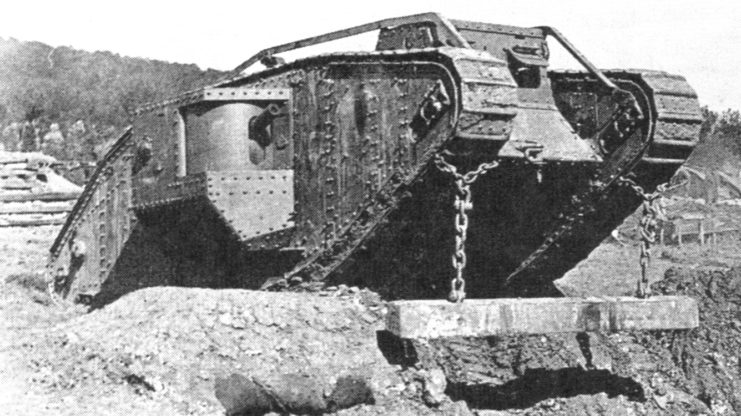
Missen and Morrey were awarded the Distinguished Conduct Medal for their bravery, while the other surviving gunners were presented with the Military Medal. All but one of them lived through to the end of the war, with Budd dying on August 25, 1918.
When fighting ceased, the men of the Fray Bentos were the most decorated tank crew of the war.
